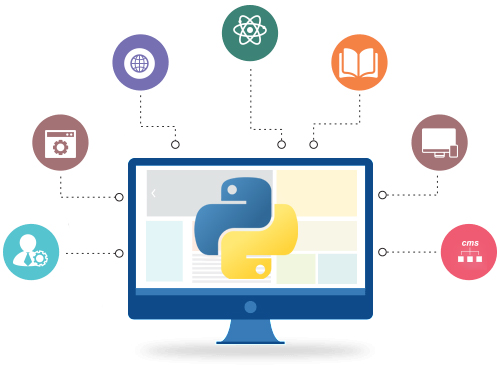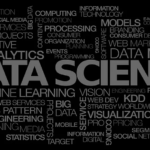AI is growing fast and is expected to grow by 38% this year in 2025, but without the right tools, businesses can’t tap into its true potential. The same lies with machine learning (ML) – The market share of ML is expected to rise to $225.91 billion by 2030!
One of the easiest ways to use these 2 tools to their potential is through Python. Python for AI and ML could give you the edge you’re looking for. In today’s post, we’ll understand how Python for artificial intelligence and machine learning truly shines.
Keep reading to find out more.
Role of Python in AI and ML Programming Languages
Programming languages that is capable of handling massive datasets, facilitate quick prototyping, and integrate easily with complex techniques serve as crucial for AI and ML. These areas of expertise need:
1) Flexibility and Adaptation: Developers must have the capacity to rapidly test out novel ideas.
2) Library Support: Getting access to ready-made frameworks and libraries to make complex tasks easier.
3) Resources and Community: A dynamic developer community for cooperation and troubleshooting.
Python developers keep selecting Python as their preferred language for AI and ML because of these demands. However, what makes Python distinct?
Why Python is the Best Choice for ML and AI
If you’re still wondering why is Python good for AI and ML, the answer lies in the combination of simplicity and versatility.
1) Ease of Simplicity
Python has a low learning curve, meaning that beginners can grasp this tool quickly. Additionally, Python has a beginner-friendly Syntex that allows Python developers to write fewer lines code.
These developers can quickly create, test, and refine projects by using Python for AI development without getting hassled by the complex Syntex.
2) Extensive Libraries
Another advantage of Python is the vast libraries it has to offer. Some of the popular ones include Pandas, NumPy, PyTorch, and TensorFlow.
These libraries allow Python developers to quickly iterate projects without having to write the code from scratch.
3) Cross Platform Functionality
Python works smoothly with different devices such as Windows, MacOS, and Linux. Hence it makes it a versatile solution for AI and ML projects.
Such compatibility can ensure that developers can code and write code for these projects without stressing about the constraints.
4) Scalability and Flexibility
From quick prototypes to building enterprise-level AI systems, Python can handle it all without breaking a sweat.
Thanks to its adaptability, it allows Python developers to integrate this programming language with other technologies. As a result, this ensures a smoother workflow, as projects can grow in complexity.
5) Strong Community Support
Millions of Python developers worldwide are active on the forum. They actively engage in providing resources and help in solving complex challenges swiftly.
Therefore, this active community makes Python particularly appealing for AI/ML where tutorials and answers can be found easily.
Top 3 Python Use Cases for AI and ML
Let’s explore a few real-world applications to get an idea of Python’s impact:
1) Healthcare –
As it helps AI models in analyzing medical images and helps in the early diagnosis of diseases like cancer and heart diseases, Python plays an important role in the healthcare sector. Machine learning techniques used in detecting anomalies in CT scans are created through libraries like TensorFlow and PyTorch.
Diagnostics has been revolutionized by the use of Python for artificial intelligence and machine learning, which has improved patient outcomes and decreased human error in medical evaluations.
2) E-Commerce –
E-commerce giants like Amazon and eBay employ Python in their algorithms for machine learning to improve the user experience. This simplifies the task of proactively suggesting items. By maintaining a tab on their browsing habits and past purchases, these techniques can predict what consumers are likely to buy next.
In addition to boosting sales, adopting Python for AI development in e-commerce helps businesses retain customers by making their shopping sessions.
3) Finance –
Python for AI and ML is being adopted by the finance industry to prevent fraud, maximize investments, and forecast market trends. For example, machine learning is used by Python-powered fraud detection systems to spot odd transaction patterns in real-time, reducing financial losses for organizations.
Python for artificial intelligence and machine learning plays an important role in financial technology as it can combine data analysis and machine learning.
These examples show how Python is crucial for industries wanting to stay ahead of the curve.
Wrapping Up: Choose Python for AI and ML Today
To sum up everything that we read, choosing the right tool for AI and ML can be a daunting experience. But thankfully, Python takes away that stress due to its simplicity and the extensive libraries it has to offer. No wonder tech giants trust Python for AI development!
The next step would be to get in touch with a company that has expertise in this niche, and Python India is just the solution! Their team of experts can use Python for ML development or Python for AI development, depending on what your project requirements are.
Don’t wait and reach out to them today to transform your projects and business.



